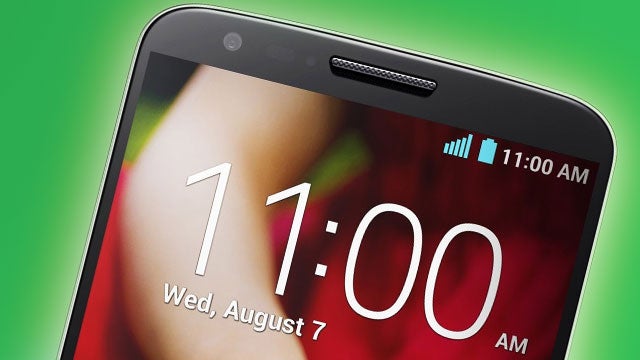LG G3 QHD Screen: The case for and against 2K phone displays

Are QHD Phone Screens Pointless?
The haters are out. LG has confirmed it will use a QHD (2560 x 1440 pixel) display in its upcoming LG G3 smartphone and the howls of discontent can already be heard. Pointless, wasteful and inefficient are the well-worn claims, but with rivals expected to follow suit are the accusations correct?
We’re going to have a look at the arguments both for and against this technology. Is it spec overkill, or is there still room for improvement?
The Case Against

Like any good court room we start by looking at the case for the prosecution and when it comes to small putting a QHD display on something as small as a smartphone the case is strong:
“No-one can tell the difference“
This is the most frequent and damning accusation and it carries a lot of credence. When Apple announced the Retina Display with the iPhone 4 in 2010 the company claimed its pixel density of 326ppi (pixels per inch) was “so high your eye is unable to distinguish individual pixels”.
To achieve that the iPhone 4 only needed to pack 960 x 640 pixels into a 3.5in display. Jump forward to the LG G3 and it will cram 2560 x 1440 pixels into a 5.5in display to deliver a monstrous 538ppi. Surely this is pointless?
“It wastes battery life”
Few topics are hotter in smartphone land right now than battery life. Handsets like the Samsung Galaxy S5 and HTC One M8 are finally starting to deliver on all day battery life even with heavy use and along will come the LG G3 and start a pixel war that sucks in rivals and sees handsets once more lasting until lunchtime.
Increasing the resolution means a phone must drive more pixels to the screen, which uses more processing power and therefore consumes more battery. If you can’t see the difference, what’s the point?
Price increase
At £400 the LG G2 was one of the more reasonably priced flagship handsets last year, but this could all change if the G3 comes packing a QHD display. As with any new technology it carries a price premium and with the Galaxy S5 and One M8 costing a hefty £550, LG may have decided QHD gives it an excuse to up the price.
Given the first two points for the prosecution, that would seem a ridiculous decision and one that could potentially bury LG’s slow but steady comeback.
The Case For

But not so fast. When Apple announced the Retina Display the same arguments were made and it became the (then) fastest selling iPhone to date. Neither performance nor battery life was impacted and it inspired the pixel war the G3 is set to elevate. Furthermore:
Screen size means you can tell the difference
While many were dazzled by iPhone 4’s Retina Display no-one would herald its once-mighty 326ppi as cutting edge now and there is a visible difference between it (and the matching 326ppi of the iPhone 5S/5C) and 445ppi displays of 5-inch 1920 x 1080p smartphones. But when the screen size increases further things change quickly.
The Samsung Galaxy Note 3 has a 5.7-inch screen and 1080p display and that brings the ppi back down to just 386ppi. Given the G3 will pack a 5.5-inch screen (larger than any of its non-phablet rivals) why downgrade arguably the most head-turning aspect of the phone?
New technology brings new efficiency
LG has been at the forefront of cutting edge display technology for a number of years and along with its increased resolution the G3’s display also brings key advances. At the forefront is its use of low temperature polysilicon (LTPS) which allows electrons to pass more efficiently through the panel, reducing its power demands and by extension processing demands and battery drain.
LG isn’t alone in using LTPS, but it claims this new panel raises the bar. The LG G2 already has the best battery life of flagship smartphones in 2013, so when combined with either the more efficient Snagdragon 801 or 805 (both are heavily rumoured) it could still keep this title.
The price should remain lower than rivals
Since the G2 was so much cheaper than its rivals the LG G3 would need a 30 per cent hike to become as expensive as the new S5 and One M8. More to the point LG is using its own display technology rather than having to buy it in from third parties and the promise of 1.15mm bezels (less than the G2 which already has the thinnest bezels on any smartphone) means it could sport this larger, dazzling display without any significant size or weight penalty.
The Early Verdict
While implementation is far more important than claims and specifications on paper, the case against a QHD display in the LG G3 isn’t as clear cut as many would have you believe. Of course it takes more than a big screen to woo today’s discerning punters, but with so many other features being relatively equal in the smartphone world right now it could prove to be the ace card.
Next, read our best mobile phones round-up


